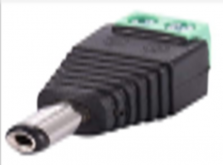Chargery
Solar Enthusiast
- Joined
- Apr 22, 2020
- Messages
- 106
hello everyone,
for the battery powered by battery but connect to exeternal power supply socket, please connect it to BMS according to below picture.

cell 1 3.685 3.663 3.665 3.682
cell 2 3.668 3.640 3.640 3.664
cell 3 3.628 3.604 3.604 3.625
cell 4 3.623 3.597 3.604 3.621
Evidently the cell voltage is accurate or as same as actual cell voltage when BMS is powered by external AC/DC adpater, when battery power BMS, whether external connetion or internal connection, the cell voltage is error or has around 25mV difference. Because the balance wire (sense wire) resistance is around 0.05 ohm, but my cell impedance is around 0.1 ohm or more. The result don't mean the solution is uselss,
when test 16S battery on BMS16T, the cell voltage reading is almost as same as with fluke when battery power BMS.
The battery pack can connect to external power supply socket directly, but need a schottky diode.
for the battery powered by battery but connect to exeternal power supply socket, please connect it to BMS according to below picture.

- The connection is only for 4S battery with BMS8T. the higher battery voltage, the smaller current from battery, so for 8S battery on BMS8T, or BMS16T and BMS24T, the influence can be ignored. with external battery positive and negative cable has a little positive effect. my testing result is as below, i tested the 4 LiPo cell voltage reading on BMS8T. the battery capacity is 2Ah and used for 3 years, has big impedance.
cell 1 3.685 3.663 3.665 3.682
cell 2 3.668 3.640 3.640 3.664
cell 3 3.628 3.604 3.604 3.625
cell 4 3.623 3.597 3.604 3.621
Evidently the cell voltage is accurate or as same as actual cell voltage when BMS is powered by external AC/DC adpater, when battery power BMS, whether external connetion or internal connection, the cell voltage is error or has around 25mV difference. Because the balance wire (sense wire) resistance is around 0.05 ohm, but my cell impedance is around 0.1 ohm or more. The result don't mean the solution is uselss,
when test 16S battery on BMS16T, the cell voltage reading is almost as same as with fluke when battery power BMS.
The battery pack can connect to external power supply socket directly, but need a schottky diode.
- The schottky current I(av) depends on relay or SSR driven current, the schottky current must be over the two mechenical relay total driven current. for Chargery DCC, 1A is enough.
- Move power selector to battery position,
- plug the external DC connector to external socket, move power selector to external position, BMS will be powered by external battery connection.





